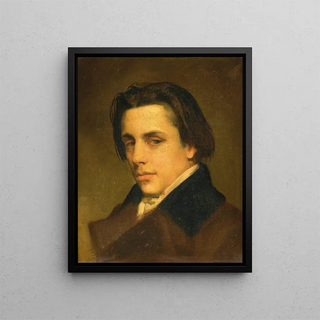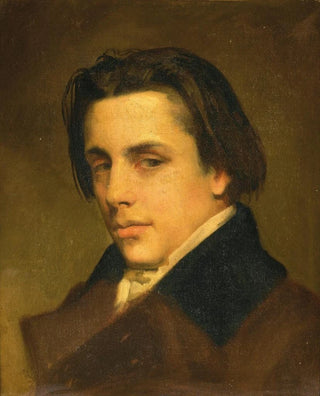Art print | Portrait of a Man - William Bouguereau


View from behind

Frame (optional)
William Bouguereau's "Portrait of a Man" is an iconic artwork that transcends the simple framework of a classic portrait. In this painting, the artist manages to capture not only the physical appearance of the subject but also his essence and character. The penetrating gaze of the depicted man, combined with undeniable technical mastery, instantly draws the viewer's eye and invites deep contemplation. Bouguereau, renowned for his ability to depict the human figure with exceptional precision and sensitivity, succeeds here in creating an intimate atmosphere where every detail seems to tell a story. This piece is much more than a mere representation; it is an exploration of human emotions and the nuances of the soul.
Style and uniqueness of the work
Bouguereau's style is characterized by striking realism, where each brushstroke is thoughtful and meticulously executed. In the "Portrait of a Man," light plays a crucial role, illuminating the subject's face with a softness that accentuates features and highlights the texture of the skin. Delicate shadows and subtle reflections give the work an almost sculptural dimension. Bouguereau uses a palette of rich and harmonious colors, creating a warm atmosphere. The posture of the character, slightly tilted, as well as the expression on his face, reflect deep introspection, inviting the viewer to ponder the thoughts and feelings that inhabit this man. This portrait, while rooted in an artistic tradition, stands out for its ability to touch the soul and evoke an emotional connection with the audience.
The artist and his influence
William Bouguereau, born in 1825, is one of the most influential artists of the 19th century, bridging neoclassicism and realism. His training at the École des Beaux-Arts in Paris allowed him to develop impeccable technique, earning him numerous accolades from his contemporaries. Bouguereau established himself in the art world through his ability to capture humanity in his portraits, but also through his genre scenes and mythological compositions. His influence extends well

Matte finish

View from behind

Frame (optional)
William Bouguereau's "Portrait of a Man" is an iconic artwork that transcends the simple framework of a classic portrait. In this painting, the artist manages to capture not only the physical appearance of the subject but also his essence and character. The penetrating gaze of the depicted man, combined with undeniable technical mastery, instantly draws the viewer's eye and invites deep contemplation. Bouguereau, renowned for his ability to depict the human figure with exceptional precision and sensitivity, succeeds here in creating an intimate atmosphere where every detail seems to tell a story. This piece is much more than a mere representation; it is an exploration of human emotions and the nuances of the soul.
Style and uniqueness of the work
Bouguereau's style is characterized by striking realism, where each brushstroke is thoughtful and meticulously executed. In the "Portrait of a Man," light plays a crucial role, illuminating the subject's face with a softness that accentuates features and highlights the texture of the skin. Delicate shadows and subtle reflections give the work an almost sculptural dimension. Bouguereau uses a palette of rich and harmonious colors, creating a warm atmosphere. The posture of the character, slightly tilted, as well as the expression on his face, reflect deep introspection, inviting the viewer to ponder the thoughts and feelings that inhabit this man. This portrait, while rooted in an artistic tradition, stands out for its ability to touch the soul and evoke an emotional connection with the audience.
The artist and his influence
William Bouguereau, born in 1825, is one of the most influential artists of the 19th century, bridging neoclassicism and realism. His training at the École des Beaux-Arts in Paris allowed him to develop impeccable technique, earning him numerous accolades from his contemporaries. Bouguereau established himself in the art world through his ability to capture humanity in his portraits, but also through his genre scenes and mythological compositions. His influence extends well






